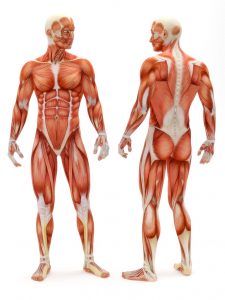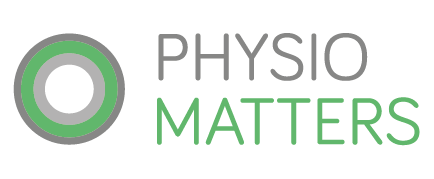 I spend a lot of time treating muscles because they can be the source of a lot of patient’s problems. This is because they have such a key role within the body and we ask so much of them. There are 3 types of muscle: skeletal (they move parts of the body including arms and legs), smooth (found in the internal organs) and cardiac (heart). Today I thought I would discuss skeletal muscle.
I spend a lot of time treating muscles because they can be the source of a lot of patient’s problems. This is because they have such a key role within the body and we ask so much of them. There are 3 types of muscle: skeletal (they move parts of the body including arms and legs), smooth (found in the internal organs) and cardiac (heart). Today I thought I would discuss skeletal muscle.
Skeletal muscle is a soft tissue composed of muscle fibres. The muscle is attached to bone via tendons (ligaments attach bone to bone). The contraction of the muscle fibres produces movement. The tendons are connected to at least two different bones and so when the muscle contracts one bone is moved. Muscles tend to work in pairs. When one is contracting (Agonist muscle) the other is relaxing (Antagonist muslce). A good example is when the biceps contracts the triceps relaxes resulting in the elbow bending. During movement in addition to the agonist and antagonist muscles there is also the synergist and fixator muscles. The fixators’ role is to stabilise one part of the body to prevent any unwanted movement and the synergist muscles stabilises around the joint where the movement is occurring.
The contraction of the muscles fibres under load or tension is known as a concentric contraction. Muscles can also lengthen under load or tension and this is called eccentric contraction. An example of this is the quadriceps muscles lengthening during sitting down slowly. Muscles can also contract without movement and this is referred to as an isometric contraction of the muscle. For example, squeezing the buttocks together activates a contraction of the glut muscles without any movement.
Muscle action is therefore a complex but extremely clever and efficient process. However sometimes physiotherapy is required to improve the performance of the muscles. These are just a few of the reasons why; muscle (including tendon) injury, over use of the muscle, weakness, poor biomechanics, poor posture and stress. Very often a problem with the muscle results in pain.
Physiotherapy treatments can reduce pain and other symptoms treating the muscle through various techniques including:
- Massage (Massage): assists with reducing the tension in the muscles and can help with relaxation if stress is a contributing factor
- Deep tissue dry needling (Dry Needling. What is it Exactly?): can assist with releasing any painful trigger points in the muscle belly
- Stretches: help lengthen tighter muscles
- Strengthening programme: make the weaker muscles stronger. Improving the balance between all the muscles ensuring they are working together correctly
- Advise and education: information on why the muscle is a contributing factor to the symptoms and how this can be improved and prevented in the future.
Treating the correct muscles can have a very positive impact on symptoms which is why I love working with them!
